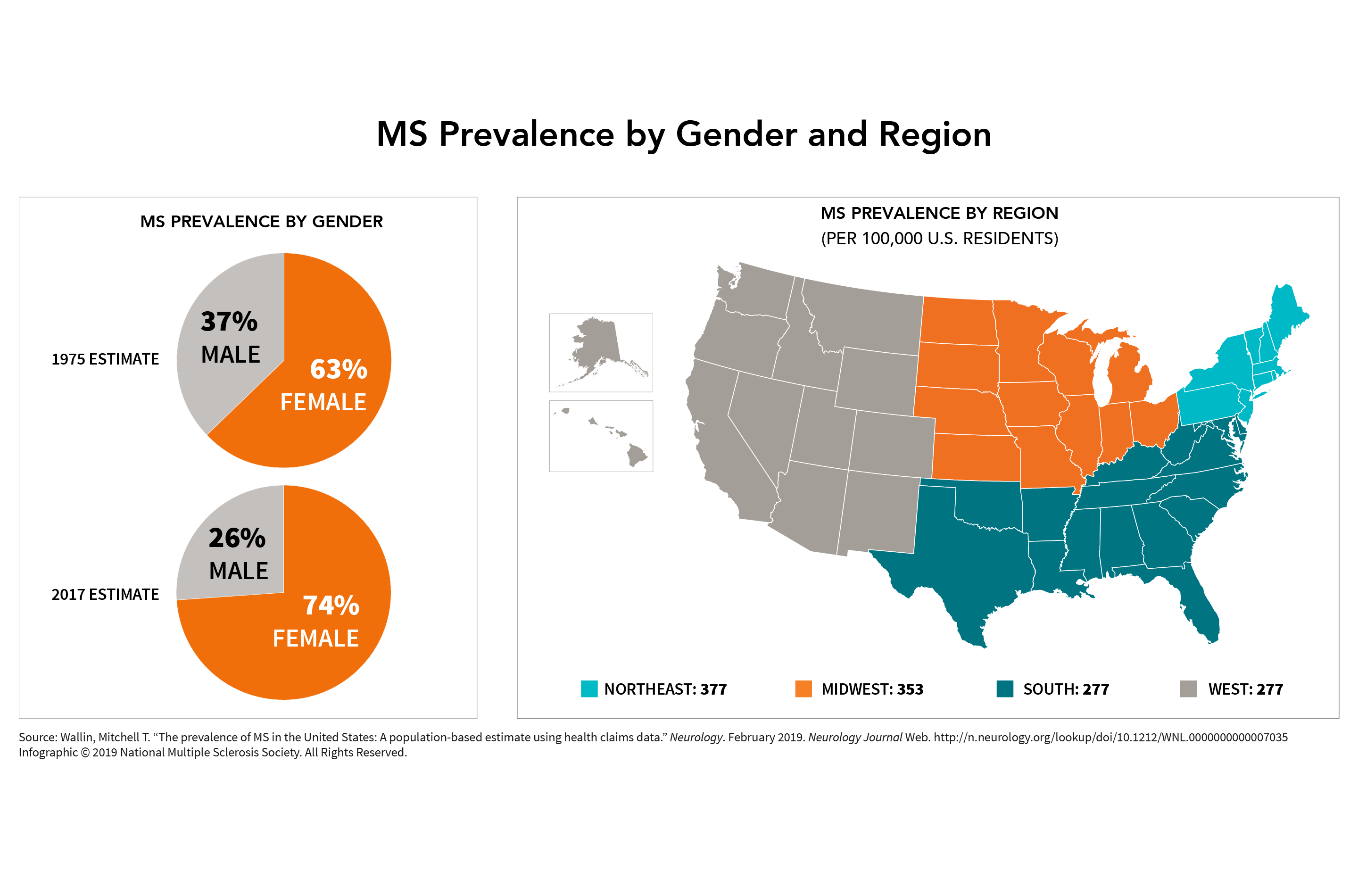Who Gets Multiple Sclerosis?
Factors of Multiple Sclerosis
Factors involved in MS include:
- Age
- Ethnic background
- Genetics
- Geographic location
- Sex

More About the Factors of MS
- Most people are diagnosed between the ages of 20 and 50 although MS can occur in young children and older adults.
- A recent study showed that MS can be prevalent in any group in the U.S. According to research, MS is most common among white people with northern European roots, but it occurs in most ethnic groups, including African Americans, Asian Americans and Hispanics/Latinx. Recent findings also suggest that African American women have a higher risk of developing MS than had been reported. Rates vary among these groups.
- MS is not an inherited disease — it is not passed down from one generation to another. However, about 200 genes each contribute to a small degree to the overall risk of MS. In the general population, the risk is about 1 in 333.
- In general, MS is more common in areas farthest from the equator. However, its prevalence — the number of people living with a diagnosis at a particular time — may differ significantly among groups in the same area of the world, no matter how far it is from the equator.
- Evidence shows that smoking, obesity and a low vitamin D level all play important roles in the development of MS. Scientists have also been investigating the link between MS and many viruses and bacteria. A growing number of research findings indicate that previous infection with the Epstein-Barr virus (EBV), which causes mononucleosis, contributes to the risk of developing MS.
